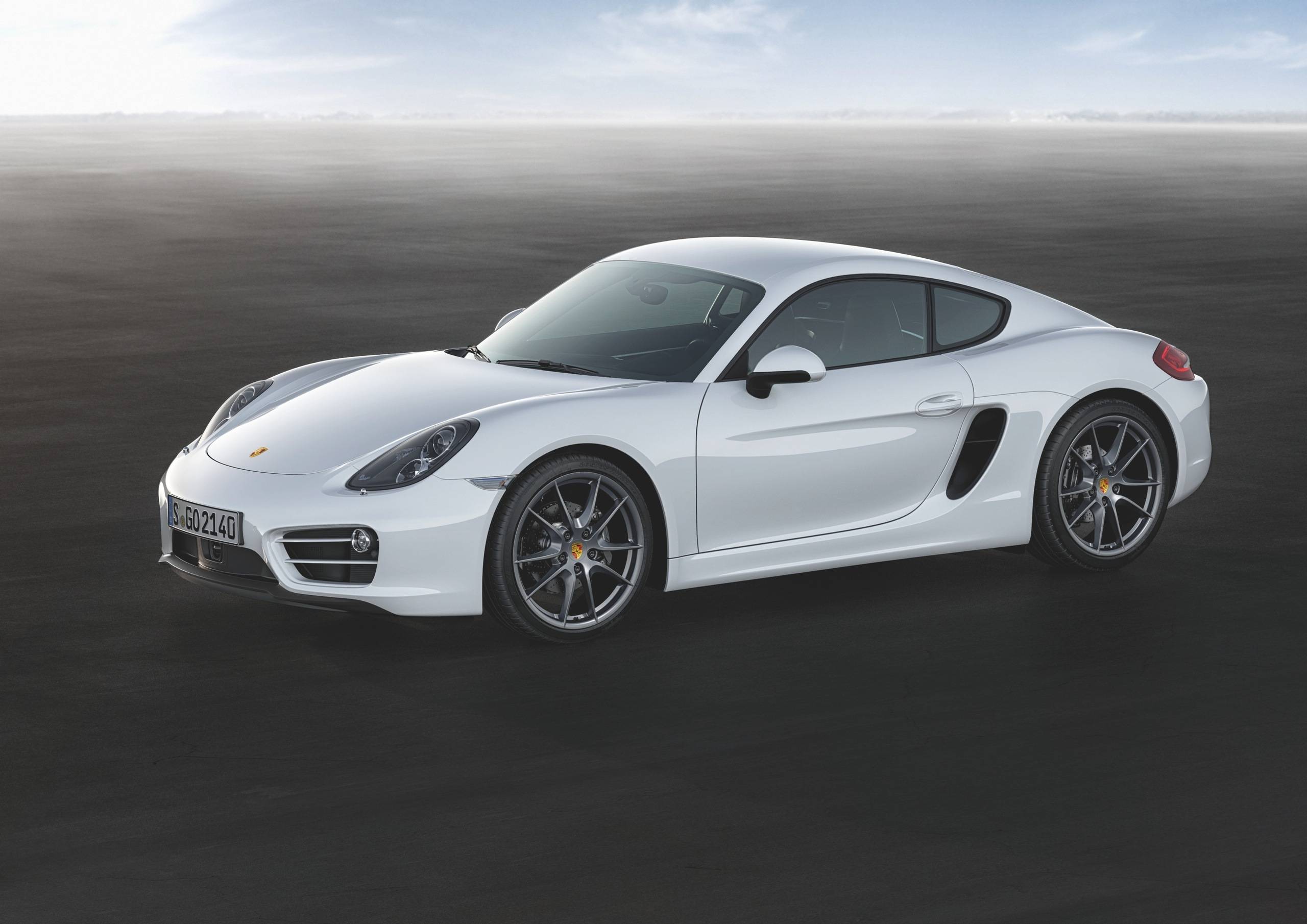
At the Automobile Journalist Association of Canada’s (AJAC) TestFest event last fall, the 2014 Cayman went up against a host of “all-new” models in the annual Sports Performance car shoot-out. These new or significantly-updated 2014 models include the BMW 435i xDrive (663 pts.), Corvette Stingray (673 pts.), Jaguar F-Type V6 S (637 pts.), Mercedes-Benz E 350 4MATIC (637 pts.) and E 63 AMG S (661 pts.). The actual scores from TestFest are shown in brackets for reference — as voted on by more than 60 of my colleagues from across Canada, including a handful from here at PRN Ignition.
The Cayman held its own, placing second a mere eight points behind the very deserving Stingray in the category. And that is really saying something because AJAC’s Canadian Car of the Year (CCOTY) awards are byproducts of one of the most thorough, broadest-based testing and evaluation processes in the world.
Whereas the Porsche 911 is more of a rip-roaring, swing-dancing kind of car lineup, the Cayman is more Mikhail Baryshnikov in Tchaikovsky’s best-known ballet The Nutcraker. Naturally, the Boxster fills the role of Gelsey Kirkland alongside “Misha” in the latter. Like peas in a pod.
Such has been the symbiotic relationship between the Boxster and the Cayman since project 987 (Porsche’s internal name for it) began in 2005, with the introduction of the redesigned second-generation Boxster and the first-gen Cayman breaking cover to much fanfare.
Totally redesigned for the 2014 model year, the second-gen Cayman and third-gen Boxster have much in common. They still share the same internal project code — now 981 — and have the same wheelbase (2,475 mm), weight (1,310 kg — with the 2.7L engine and manual), 0.30 drag coefficient and the same basic rear mid-engine architecture.
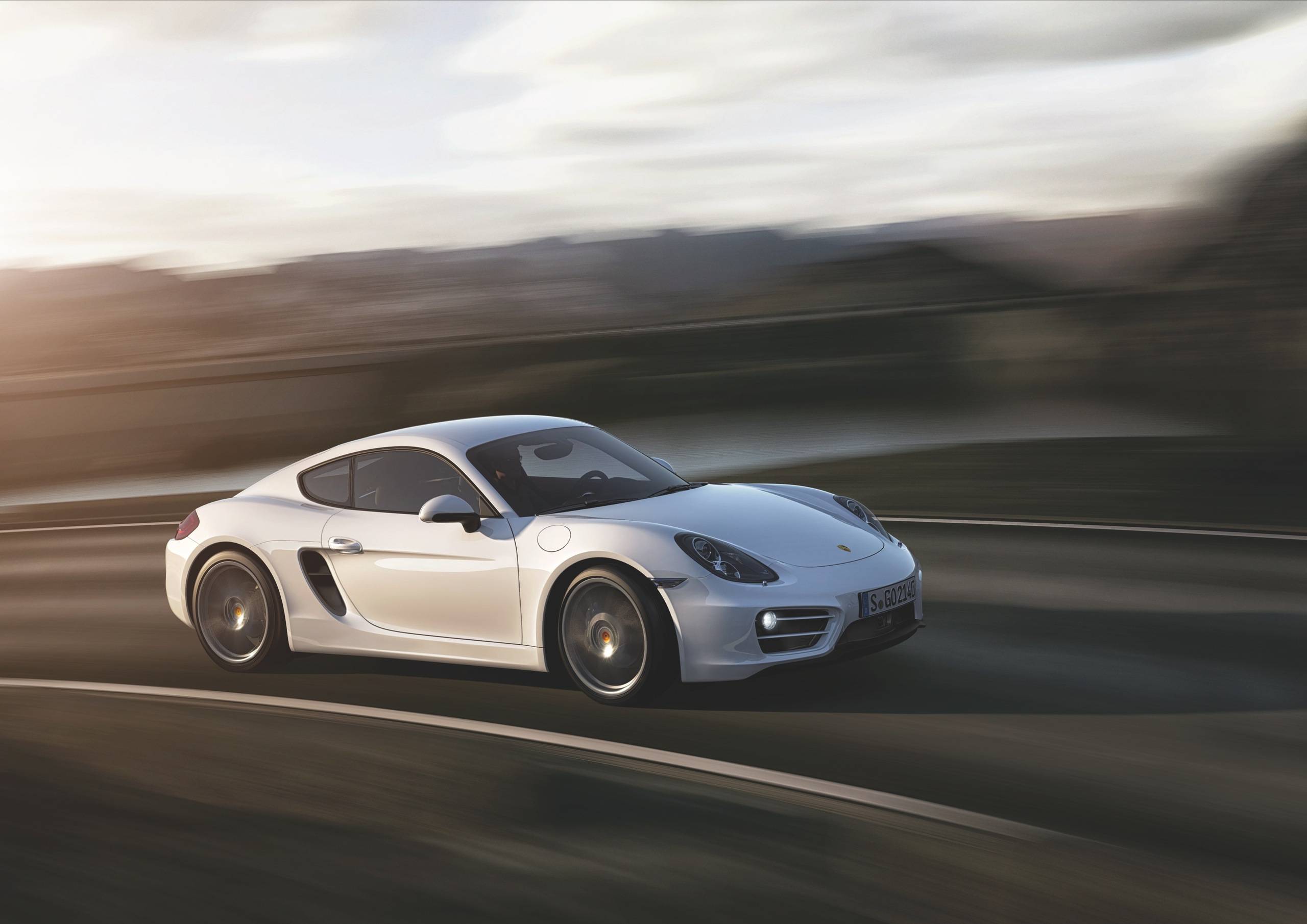
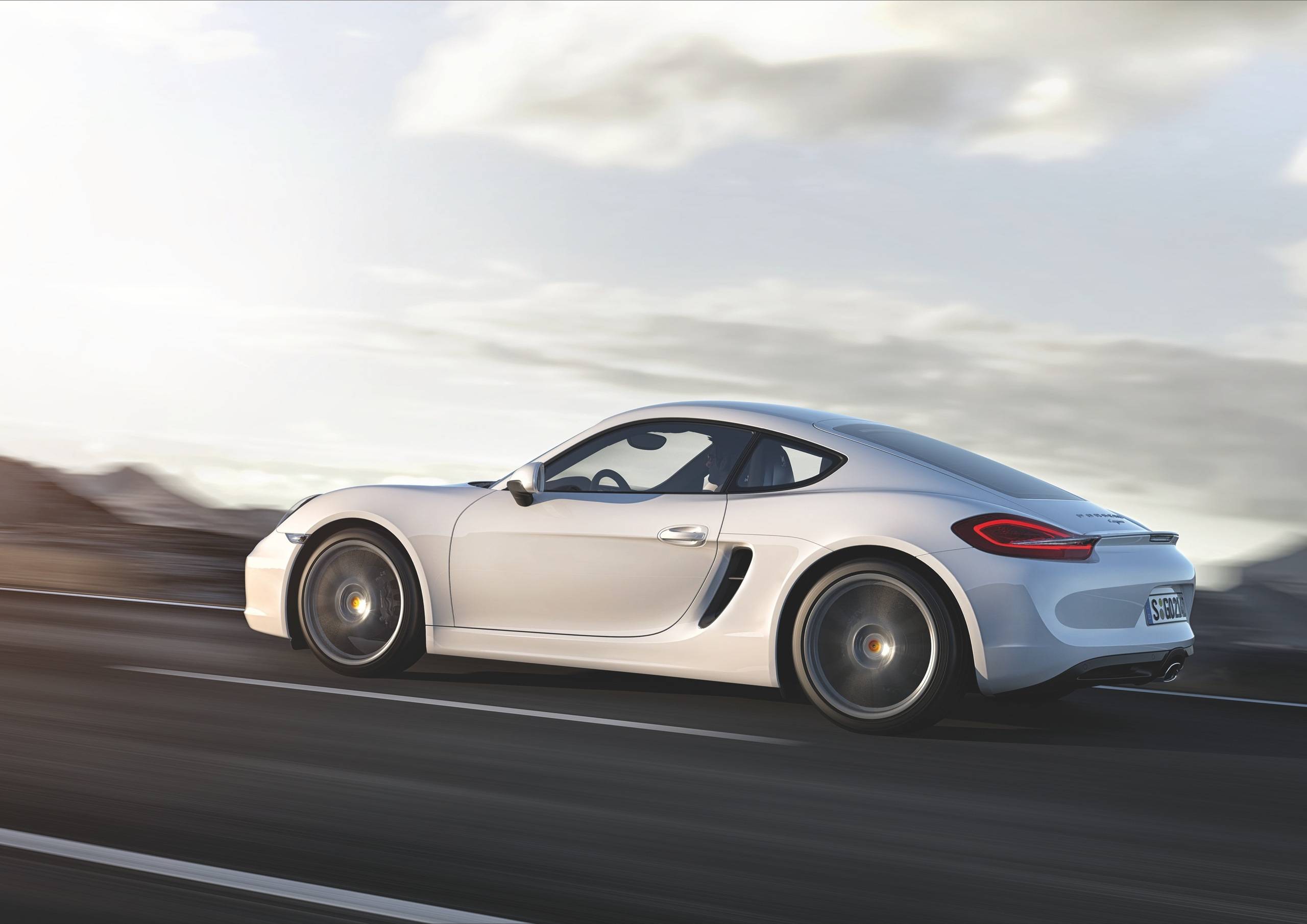
Shared engines achieve similar performance, whether in base or S trim. The former 2.7L flat-six engine develops 275 hp and 214 lb-ft of torque at 6,500 rpm in the Cayman, and 215 hp and 207 lb-ft in the Boxster. Similarly, the Cayman S and Boxster S models get a 3.4L boxer engine making 325 and 315 horsepower, respectively.
As much as they are similar, they are such very different cars due to one simple fact: one of them is a drop-top while the other is a hard-top coupe.
Design
In the design department, the Cayman is arguably hotter than all previous generations of the 911 combined. Now, that’s a loaded statement if there ever was one, but whereas 911 designers are pigeon-holed into rehashing its iconic design every six or seven years — with great success I should add — the youngest Porsche coupe has been redesigned but once. The results are plain to see on this 2014 model.
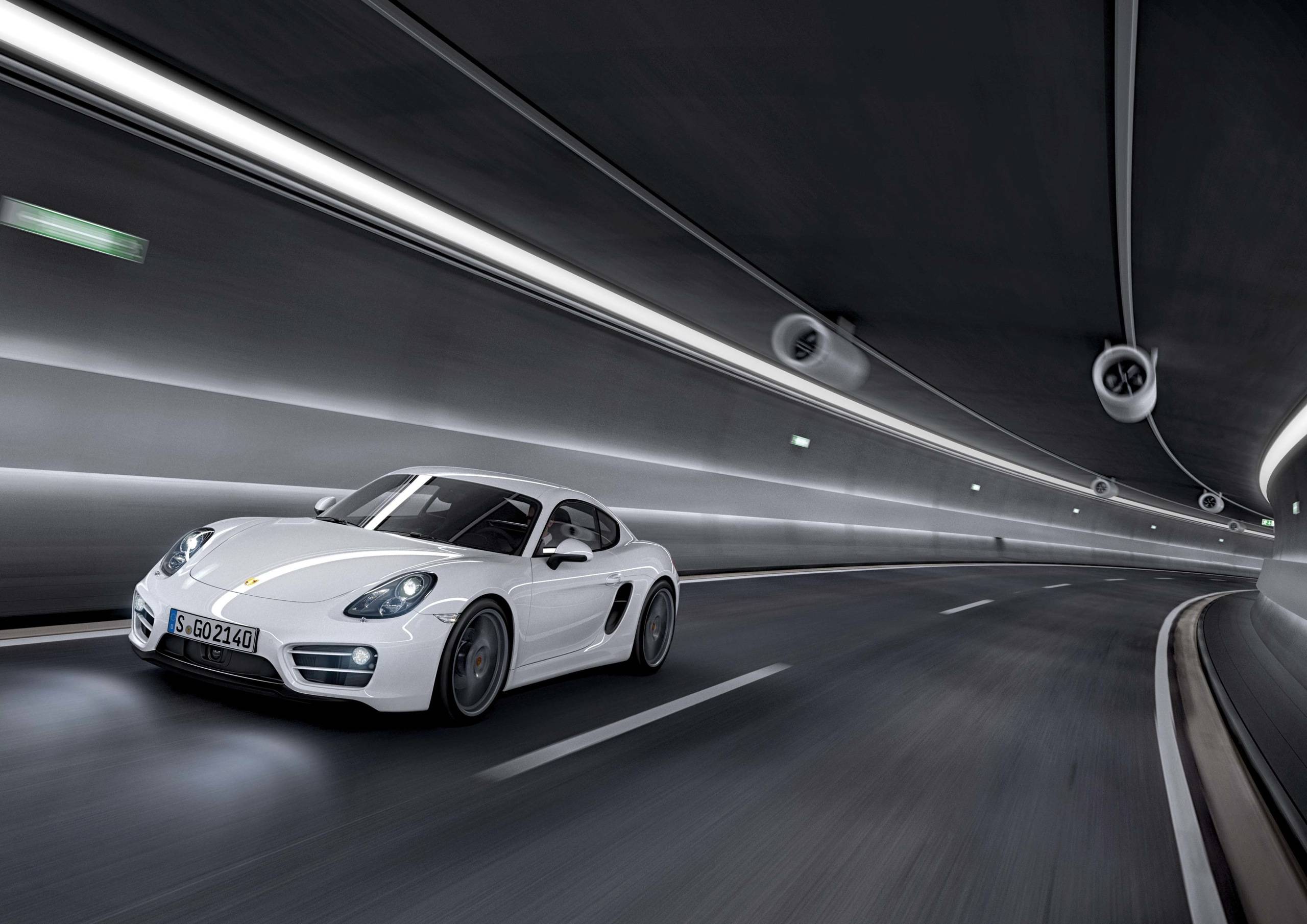 Compared to its predecessor, this Cayman is 30 kg lighter and 40% stiffer, with a longer wheelbase and wider track that greatly improve its dynamic handling response and, more importantly, the overall driving performance. So much so that, at times, you could almost swear you’re driving a much more expensive Porsche.
Compared to its predecessor, this Cayman is 30 kg lighter and 40% stiffer, with a longer wheelbase and wider track that greatly improve its dynamic handling response and, more importantly, the overall driving performance. So much so that, at times, you could almost swear you’re driving a much more expensive Porsche.
The 2014 body is more chiseled than the outgoing model, too. The body shell is galvanized on both sides, and paired with aluminum doors and lids in the fore and aft. Like the Boxster, the Cayman borrows many design cues from the harrowing Carrera GT and Nordschliefe-smashing 918 Spyder. And that’s a good thing. No — that’s a great thing!
Interior
Large and tall drivers might find it a squeeze to get into this form-fitting, driver-focused cockpit, but it fits my 5'9” frame like a leather glove that’s been warming by the fireplace. The look and feel is eerily similar to the 911 interior, however, though that’s not a bad thing either.
Standard interior features include eight airbags for driver and passenger, including knee airbags, three-spoke height- and reach-adjustable steering wheel and a remote entry alarm with interior surveillance. Also included is a CDR AM/FM/CD radio with four loudspeakers, Universal Audio Interface, HomeLink (R), Bluetooth (R), cruise control, multifunction trip computer and more.
My only qualms with the interior are the shift knob and the cupholders. The former is unnecessarily tall, and occasionally obtrusive. The stealthy, adjustable cupholders that occupy the space above the glove box, while not at all intrusive, are too high up and too shallow. Top-heavy drinks could easily be dislodged.
Okay, enough about the cupholders already.
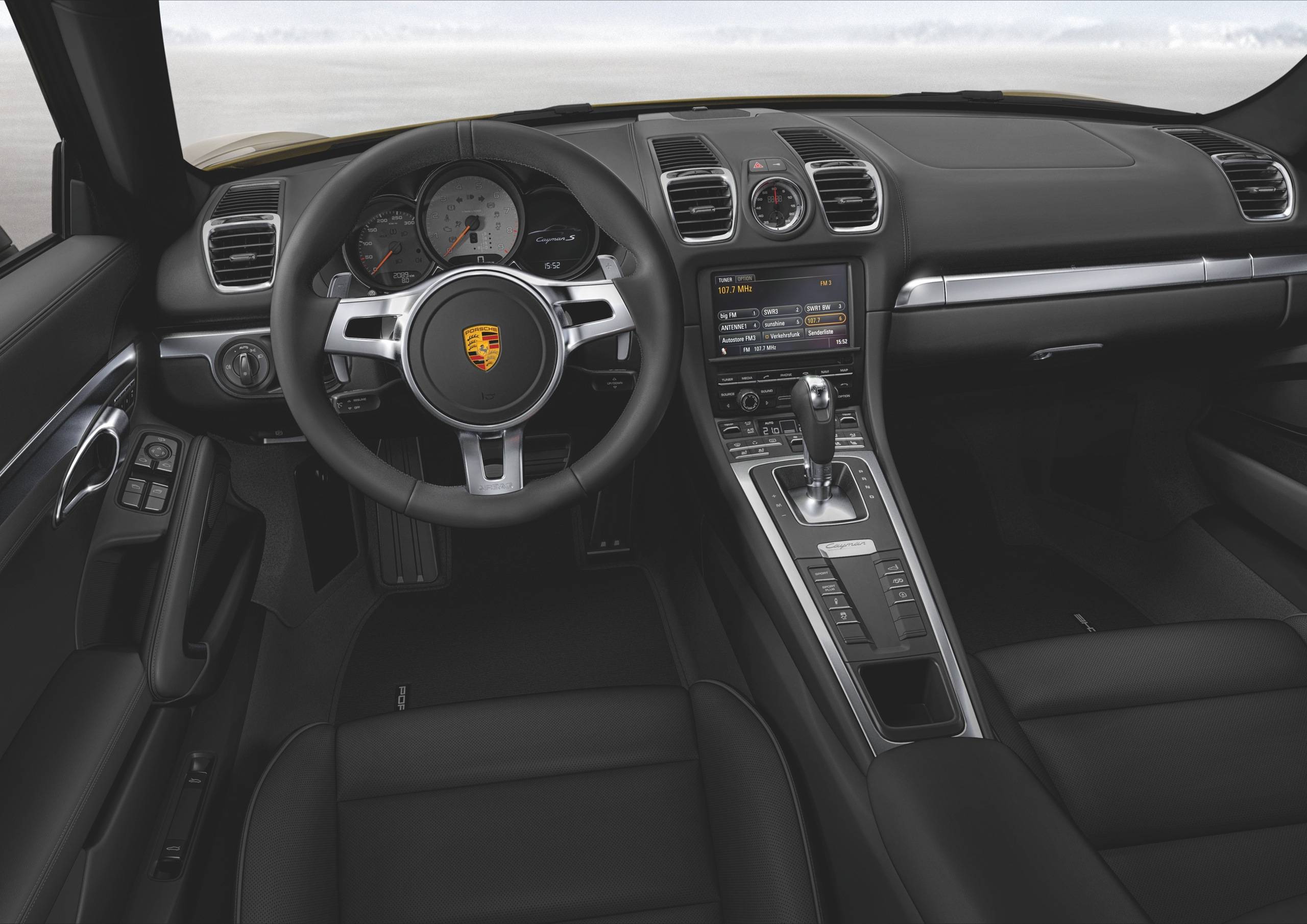
Driving
I’ve come to enjoy Porsche’s dual-clutch PDK transmission for its lightning-fast operation, however, the "Hey! I’m over here!" Imola Yellow test car is packing the more economical and more fun six-speed manual transmission. Gear shifts, while smooth and precise, now happen only as fast as my right hand and left foot; and, the absence of paddle shifters does feel a bit awkward. C’est la vie!
Porsche claims a 0-100 km/h time of 5.7 seconds in this configuration. AJAC’s official performance testing team could only muster 6.2 seconds after averaging three runs, which is quite respectable considering the cold late-October temperatures that stuck around throughout the week-long event.
 Performance testing also revealed the test vehicle can dance from 80-120 km/h (for passing) in five seconds flat. And, the car’s four-piston, internally-vented and cross-drilled disc brakes (315 mm front, 299 mm rear) can haul the car down from 100-0 km/h in 37.3 m of road.
Performance testing also revealed the test vehicle can dance from 80-120 km/h (for passing) in five seconds flat. And, the car’s four-piston, internally-vented and cross-drilled disc brakes (315 mm front, 299 mm rear) can haul the car down from 100-0 km/h in 37.3 m of road.
With near-perfect 46/54 front/rear weight distribution, the Cayman is very well balanced and offers a sporty and compliant ride. It is less prone to swapping ends if you’re not driving precisely than, say, the Mercedes-Benz SLK because you’re not sitting so close to the rear axle. The electromagnetic steering with variable ratio and pulse provides excellent feedback for the driver.
Porsche’s independent with McPherson strut suspension and stability management system (PSM) with ABS, ASR and ABD keeps things on the up-and-up when you’re in the mood for worry-free cruising. Of course, the traction controls can be turned off completely to get the most out of the chassis when pushing the car hard on the track. Sport and Sport Plus driving modes are also available.
That said, if you’re planning to get out to the track more than once or twice a year, I would recommend checking out the Cayman S with the seven-speed PDK transmission to fully exploit the 50 additional ponies and modest torque bump. The S badge also adds larger brakes and uprated suspension bits, and I can tell you the Cayman S is a dream to drive on the Mosport Grand Prix track at Canadian Tire Motorsport Park.
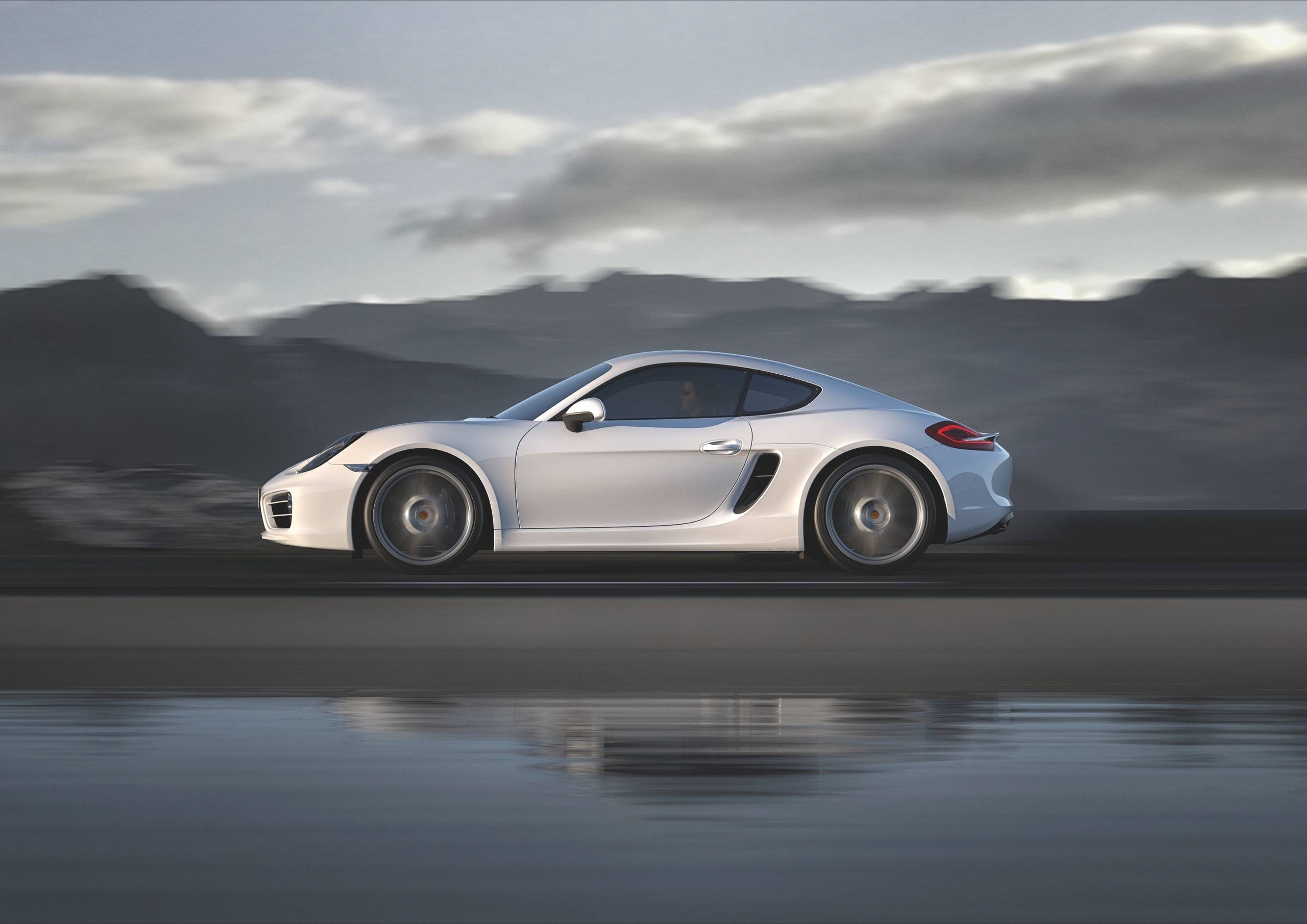 The Cayman doesn’t cost an arm and/or any legs to get into. The $59,900 base price is entry-level by Porsche standards, but the total package is very well put together and certainly worth the money.
The Cayman doesn’t cost an arm and/or any legs to get into. The $59,900 base price is entry-level by Porsche standards, but the total package is very well put together and certainly worth the money.
No, it can’t match the power and performance of the bigger, faster American muscle car, but this Cayman’s $64,310 as-tested price tag is a strong value proposition for anyone looking to get into a Porsche.
The fact that so many of my fellow AJAC CCOTY jurors collectively had it within striking distance of the C7 speaks volumes to its status as a true driver’s car. That said, it is most definitely worth putting on your short list of 2014 test drives.
You’ll find there is more than ample space for a week-long road trip for two, and the Cayman is calm and composed whether cruising or being pushed hard. It’s also the perfect place to get cozy with the one you love!






















